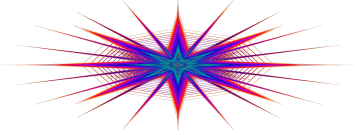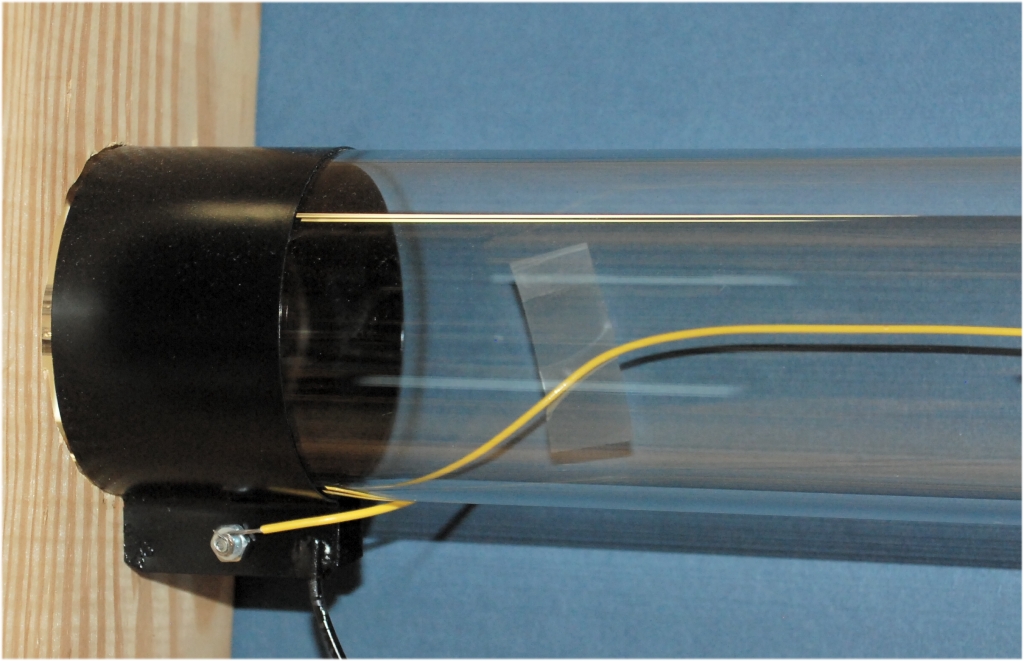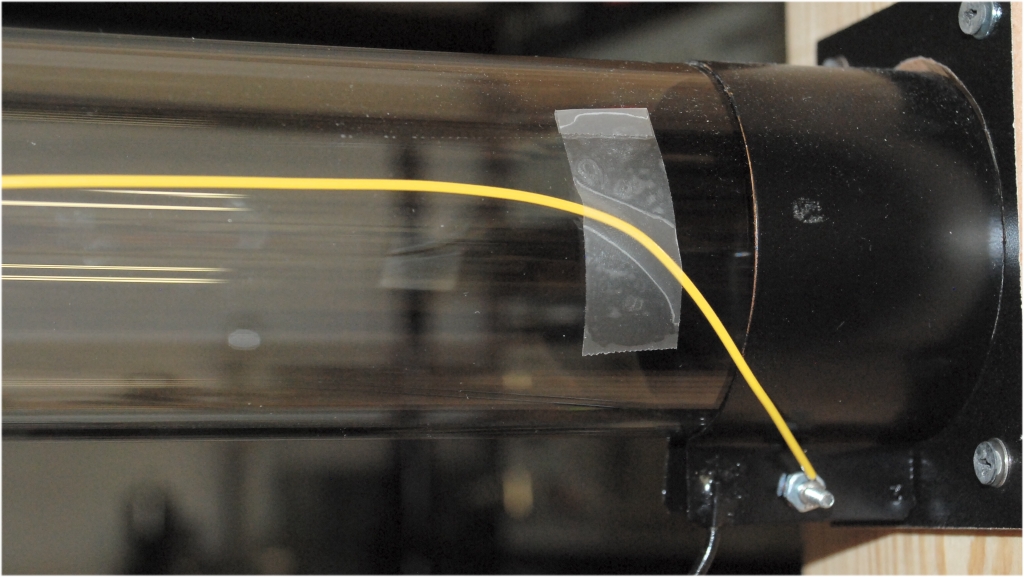Spectrotek Services  Rife Plasma System Components
Rife Plasma System Components
Current as of
03 December 2017
Side Electrode Wires for the SSQ-BAT Plasma
Tube
By adding a pair of side
electrode wires, the initial firing voltage of the SSQ-BAT is reduced.
If you are using an SSQ-BAT, this modification is
strongly suggested to help prevent amplifier damage.
This
change in electrode configuration helps to protect the PA1, PA2, PA3,
or SPA4 amplifier from excessive tank circuit voltage that is generated
when the amplifier is producing RF output power but the plasma tube has
failed to light immediately. This may happen when using high modulation
frequencies or when the duty cycle is short. A short duty cycle may be
caused by a combination of simultaneously running modulation
frequencies that combine to produce very short output pulses. When this
happens, the plasma tube may fail to light during part or all
of
the RF output pulse from the amplifier. This failure to of the tube to
light may cause amplifier failure, with the destruction of the
STW20NK50Z MOSFET in the amplifier.
The
reason for this failure to light immediately is due to the lack of
ionized gas present when the tube is not turned on. Because it requires
some milliseconds for all of the ionized gas to in the tube recombine
after the power to the tube is turned off, the tube will normally light
properly once it has gone into conduction, as long as the OFF time is
substantially less than the ion recombination time. However, when the
tube is first turned on, or if the OFF time between modulation pulses
is long enough, the number of available ions in the tube will have
fallen so low that the tube becomes non-conducting. As a result, it
will require a much greater applied RF voltage across the tube
electrodes to light the tube for the first modulation pulse than it
will for subsequent pulses.
Should
a series of very short pulses be applied to the tube when it has not
been conducting previously, it is quite possible that the tube may fail
to light at all during the series of short pulses. This failure to
light will create very high voltages across the amplifier, and may
cause MOSFET failure. These failures can be extremely difficult to
trace, since they tend be intermittent and random. A system
that
has been functioning perfectly for an extended period
of time may suddenly experience one or more MOSFET failures within a
short interval. The addition of the side electrode wires as described
here will virtually eliminate this problem.
No adjustment or tuning of the
LC31 coupler is required in order to add these side electrode wires.
 SSQ-BAT
with side electrode wires temporarily installed with adhesive tape for
testing.
SSQ-BAT
with side electrode wires temporarily installed with adhesive tape for
testing.
 SSQ-BAT
with side electrode wires permanently mounted in place using Silicone
adhesive.
SSQ-BAT
with side electrode wires permanently mounted in place using Silicone
adhesive.
Plastic
tape was used to hold the side wires in place during testing. For these
tests, the bare end of the wires were simply twisted around the collar
electrode mounting screws. Because of the low current flowing in the
side wires, this simple connection method was satisfactory for
testing.
The wires should be insulated. Teflon insulation is
ideal from the standpoint of heat resistance, but any type of
heat
resistant insulation is OK. Bare wires should not be used because the
RF voltage on the wires may become high enough where the wires touch
the tube to cause localized overheating of the tube wall. This may
cause the glass to crack at that point, ruining the tube. The
insulation on the wire will space the wire far enough from the tube
wall to reduce the electrical and heat stress enough to prevent tube
damage. The wire used here is AWG 22, but any wire from AWG 24 to AWG
10 should work as well.
The wires should run on opposite sides
of the tube, directly across from each other. It does not matter where
they are placed, side, top, bottom, or wherever, just place them across
the tube from each other. The wires should extend about three-quarters
of the distance from one electrode to the other.
For these
photos, the wire was held in place with plastic tape. If you have tape
which will tolerate 100° C temperature without melting or loosening,
then using tape will work OK. On my tube, I used Silicone seal
adhesive, which will withstand high temperatures. I used several strips
of tape to hold the wires in place against the tube, and then applied
four blobs of the adhesive to hold the wire against the tube. The tape
was removed 24 hours later after the adhesive had hardened. Do NOT use
an adhesive which is not flexible when it has hardened. A non-flexible
adhesive can cause the glass of the tube wall to spall when it gets
hot. This may result in a shattered tube.
 Orientation
of the side electrode wire on the left side of the plasma tube.
Orientation
of the side electrode wire on the left side of the plasma tube.
This
wire is connected to the collar electrode mounting screw on the
opposite side of the tube from the side wire. It does not matter which
side of the collar electrode the side wire is connected to. In this
case, for testing, it was easier to bring the wire across the bottom of
the SSQ-BAT tube to reach the long end of the mounting screw.
 Orientation
of the side electrode wire on the right side of the SSQ-BAT plasma tube.
Orientation
of the side electrode wire on the right side of the SSQ-BAT plasma tube.
In
this case, the side wire simply goes directly from the collar electrode
mounting screw up and over to the side of the SSQ-BAT. Reversing the
mounting screw of the left side collar electrode would have allowed
connecting the side wire seen in the previous photo to connect to the
electrode in the same manner as this wire.
 SSQ-BAT
running with an amplifier voltage of 19 volts. Power is about 5 watts
peak power.
SSQ-BAT
running with an amplifier voltage of 19 volts. Power is about 5 watts
peak power.
At
this low power level, there is not enough available energy to light the
tube from one collar electrode to the other. In this condition, the
tube does not provide the proper load to the LC31 coupler and the
amplifier. Without the side wires, the tube would not light at
all, and the RF voltage from the LC31 coupler and in the amplifier
output tank circuit would increase, possibly rising high enough to
cause the STW20NK50Z MOSFET to fail.With the side wired
present on the SSQ-BAT, the voltage that is produced by
the LC31 coupler is high enough to ionize the gas between the side
electrode wires. This loads the amplifier enough to prevent damage,
even though the tube is not yet in full conduction.
 SSQ-BAT
running with an amplifier voltage of 38 volts. Power is about 80 watts
peak power.
SSQ-BAT
running with an amplifier voltage of 38 volts. Power is about 80 watts
peak power.
At
this power level, the tube is in almost full conduction. The glow
discharge is now connecting to both collar electrodes and passing down
the side of the tube. The amplifier loading is correct, and the
electrical waveform is correct. Before the addition of the side wire
electrodes, the tube would not exhibit proper operation until at least
75 volts was applied to the amplifier. The addition of the side
electrode wires has made a considerable improvement in the electrical
performance of the SSQ-BAT plasma tube.
 SSQ-BAT
running at an amplifier voltage of 114 volts. Power is about 250 watts
peak power.
SSQ-BAT
running at an amplifier voltage of 114 volts. Power is about 250 watts
peak power.
Here
the tube is well into full conduction and working properly. The
discharge column has tightened up and now passes down the central
region of the tube. There is little interaction with the side electrode
wires at this power level.

This
web site and all contents including
pictures, text and diagrams is
Copyright © 2012 - 2018 by Ralph M Hartwell.
 Rife Plasma System Components
Rife Plasma System Components Rife Plasma System Components
Rife Plasma System Components





